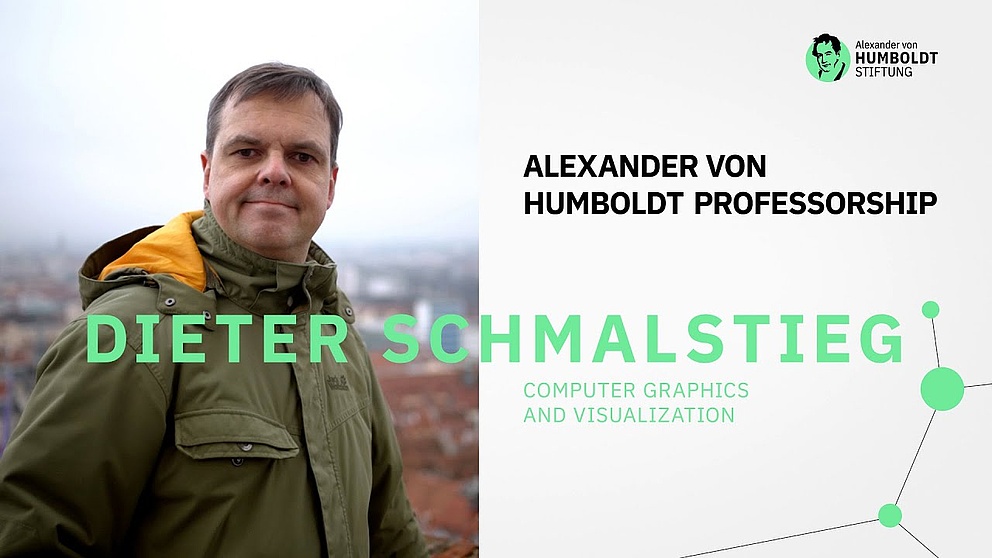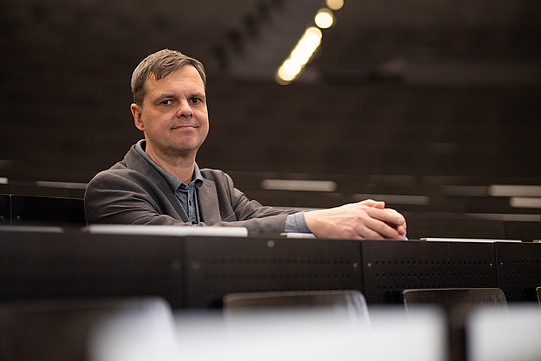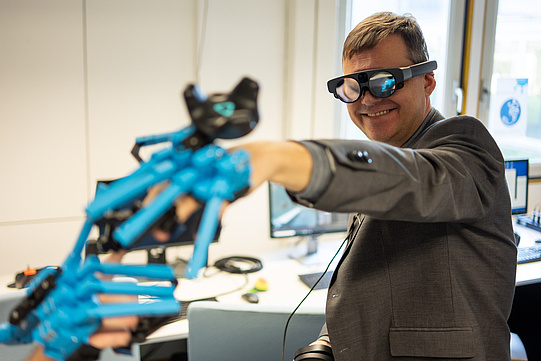Jump to the content
- {{#headlines}}
- {{title}} {{/headlines}}

Contact
Press, Communications and Marketing
Tel.: +49 228 833-144
Fax: +49 228 833-441
presse[at]avh.de
Computer graphics and visualization
Augmented reality extends images of the real world to embrace virtual elements. Many areas, such as the gaming industry, architecture, medicine and immersive shopping, already use AR applications. They enable customers to virtually furnish their sitting room on their smartphone, checking whether the red sofa really looks good there. In medicine, augmented reality is designed to help, for example, during minimally invasive operations by directing information via AR smart glasses into the surgeon’s line of vision.
Dieter Schmalstieg worked on VR and AR research as early as the 1990s whilst doing his doctorate. A distinguishing feature of his technical systems is that they function in real time and facilitate human-computer interaction studies even for complex technical procedures. The goal of his research is intelligence amplification (IA), technical systems to help humans with certain tasks.
Schmalstieg made pathbreaking progess in generating photorealistic images by combining real and virtual visual material. In application fields such as entertainment and immersive shopping the aim is to project virtual elements into real-world images so that they are indistinguishable from reality. Such “coherent rendering” is only possible if the photometric properties of the real objects are known. In particular, information about the incoming light and the material properties are required – a major challenge because usually the programmer does not know either of them. With the help of numerical optimisation and machine learning, Schmalstieg’s research group has worked on methods to reliably calculate the photometric properties and the approximate lighting – in real time and with a minimum number of observations.
At the University of Stuttgart computer graphics and visualization have been a strategic focus for almost 20 years. They are pooled in the Institute for Visualization and Interactive Systems (VIS) and the internationally renowned visualization institute VISUS. The two institutes aim to cover the entire breadth of visual computing. With the help of Dieter Schmalstieg, the existing gap in the field of virtual and augmented reality is supposed to be closed. The University of Stuttgart wants to play a formative role in establishing VR/AR as a new media and secure its place at national level.
Brief bio
Born in Austria, Dieter Schmalstieg completed his doctorate and habilitation at TUW in Vienna. In 2004, he became a professor at Graz University of Technology. In 2012, he became head of the Institute of Computer Graphics and Vision there, which he has expanded significantly. He is a fellow of the IEEE (Institute of Electrical and Electronics Engineers), member of the Academia Europaea and has worked for the community as a steering member and editor of various IEEE organs. Schmalstieg has had a lasting impact on the spread and standing of VR/AR research.






